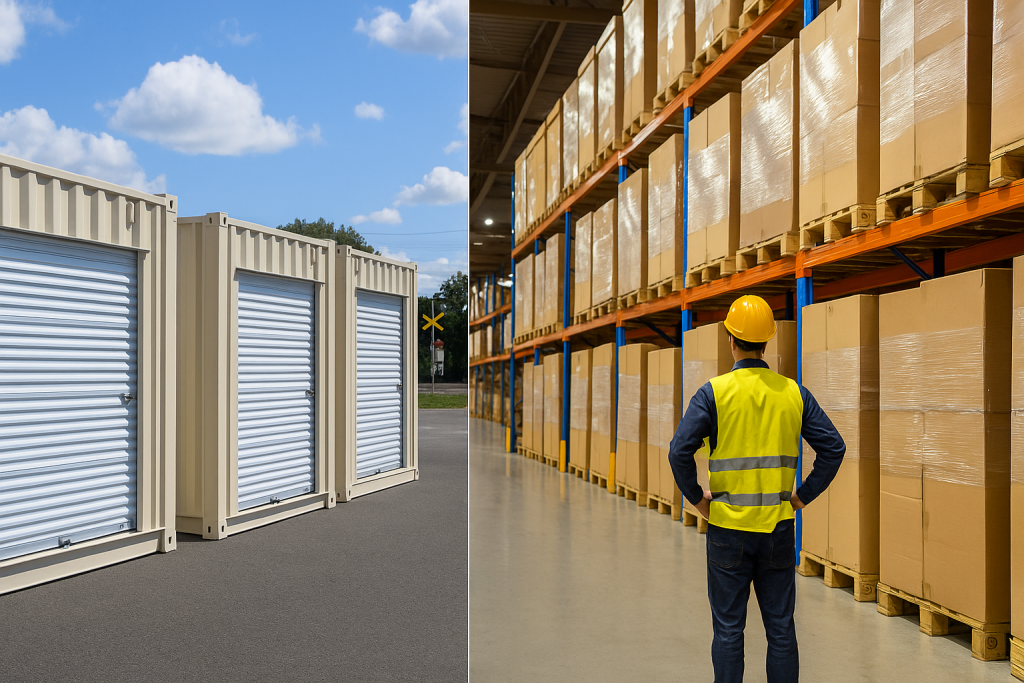By Martin Vassilev / 11 Sep, 2025
In today’s competitive marketplace, businesses of all sizes must make strategic decisions about how to store their inventory, equipment, and critical supplies. Whether operating in bustling metropolitan centers like Toronto, New York, and Chicago, or serving regional markets across Canada and the U.S., choosing between long-term and short-term storage solutions can dramatically affect operational efficiency, cost management, and customer satisfaction. This comprehensive guide explores the advantages, challenges, and key considerations of both options, helping organizations make smarter decisions to optimize logistics.
Short-term storage typically refers to arrangements lasting a few weeks to several months. It is best suited for businesses experiencing seasonal spikes, product launches, or temporary projects. For example, a retail chain preparing for holiday sales may use short-term warehousing to handle bulk shipments without overwhelming their primary distribution centers.
Short-term storage also aligns with agile business models like on-demand warehousing, which allows organizations to scale up or down based on immediate needs without committing to lengthy contracts.
Long-term storage covers extended periods ranging from six months to several years. It is designed for bulk goods, surplus inventory, or slow-moving items that don’t require frequent access. This solution benefits businesses needing predictable costs, stable operations, and secure facilities for maintaining product integrity over time.
For example, companies storing seasonal merchandise like winter clothing in Canada or industrial equipment in the U.S. often rely on long-term warehousing for both cost and security benefits.
Short-term warehousing gives businesses the flexibility to quickly respond to market fluctuations, consumer demand, or supply chain disruptions. With industries embracing distributed warehousing models, companies can easily place goods closer to end consumers, reducing shipping times and costs.
Rather than investing in larger permanent facilities, businesses can rely on temporary storage during peak periods. This approach avoids overcapacity issues and helps control expenses.
Short-term storage integrates seamlessly with fast-paced e-commerce fulfillment strategies, such as those outlined in ByExpress’s Ultimate Guide to Fast Fulfillment. Businesses can leverage temporary facilities to meet same-day or next-day delivery commitments.
Long-term storage contracts provide predictable costs and guaranteed space availability. For companies handling large quantities of inventory, such stability is crucial for strategic planning.
Products stored over extended periods require climate control, pest management, and advanced security systems. Long-term facilities are often equipped with these safeguards, making them ideal for sensitive goods such as pharmaceuticals, electronics, or perishable items requiring temperature-controlled warehousing.
Committing to long-term contracts typically reduces the per-unit storage cost. This is especially valuable for enterprises with high-volume operations seeking to maximize margins.

Perishable goods demand climate-controlled storage.
High-value inventory requires enhanced security and insurance options.
Seasonal products may only need temporary solutions.
A well-planned storage strategy should align with overall supply chain efficiency. Businesses operating in cross-border environments (e.g., between Canada and the U.S.) must ensure their storage solutions complement customs processes and regional distribution needs.
Modern warehousing solutions use real-time tracking and AI-driven inventory systems. As highlighted in ByExpress’s article on AI in Logistics, adopting intelligent systems reduces errors and enhances visibility across long- and short-term storage facilities.
Businesses must evaluate:
Rental vs. ownership models.
Operational costs such as utilities, labor, and insurance.
Hidden expenses, as explained in The Hidden Costs of Poor Warehousing Management.
Seasonal demand for storage peaks in winter months, as companies prepare for holiday sales and weather-related disruptions.
Canada’s vast geography means businesses often benefit from regional fulfillment centers to minimize shipping delays.
A larger e-commerce base and consumer-driven economy create constant demand for flexible short-term storage.
States like California and Texas are hotspots for long-term facilities due to their logistics infrastructure and access to ports.
Seasonal spikes in demand.
Entering new geographic markets.
Temporary overflow inventory.
Pilot projects or product testing phases.
Businesses exploring on-demand warehousing can maximize agility, as described in ByExpress’s guide on Flexible Logistics.
Maintaining bulk surplus inventory.
Requiring guaranteed space and stable costs.
Storing products that don’t require frequent rotation.
Industries with long production cycles (e.g., manufacturing and heavy equipment).
For organizations needing robust, sustainable solutions, long-term contracts often align with green logistics initiatives that reduce waste and improve efficiency.
Forward-thinking companies increasingly adopt a hybrid approach, combining long-term storage for predictable items with short-term options for agile needs. This balance ensures resilience against supply chain disruptions while controlling costs.
For example:
Long-term facilities manage bulk imports and slow-moving goods.
Short-term spaces handle fast-moving e-commerce items and last-mile delivery.
This dual approach is supported by advanced warehouse automation technologies showcased in ByExpress’s article on The Future of Warehouse Automation.
Storage strategies must also account for regulatory compliance and cross-border trade rules. Resources such as the U.S. Customs and Border Protection and the Government of Canada Trade Regulations provide essential guidelines for businesses moving goods between Canada and the U.S.
Choosing between long-term and short-term storage solutions is not a one-size-fits-all decision. Businesses must weigh the type of products, cost structures, logistics strategies, and customer expectations. While short-term storage offers flexibility and responsiveness, long-term solutions provide stability and cost efficiency. The most competitive businesses in Canada and the U.S. adopt a hybrid model, ensuring agility while maintaining strong foundational storage strategies.
For organizations seeking scalable, technology-driven, and cost-effective storage options, ByExpress provides tailored warehousing and logistics solutions that align with modern supply chain demands.
👉 Contact ByExpress today to explore how the right mix of storage solutions can optimize your business operations across Canada and the U.S.

“Thanks to Byexpress all my shipping and fulfillment costs are in line now”

“All my issues were solved by Byexpress team that I had with pervious 3pl provider.”

“Thank you Byexpress team could not done it without you guys.”

“Their integration and customer service were the key for me”

“Outstanding delivery service! The package was well-packaged, and
the delivery team was professional and courteous”

“Great and knowledgeable team to work with.”

Thanks, guys, for reducing my shipping rates
Ottawa Office
2411 Holly Lane
Ottawa, ON, K1V 7P2
Toronto Office
13-280 West Beaver Creek Road Unit #136
Richmond Hill, ON, L4B 3Z1
Alexandria Office
173 Kenyon Street West
Alexandria, ON, K0C 1A0
Montreal Office
4388 Saint-Denis Street Unit #200
Montreal, QC, H2J 2L1
California Office
155 North Riverview Drive
Anaheim Hills, CA, 92808
Call Us
Toll-Free: 1-866-744-7122
Local : 613-739-3000
Email Us
Multilingual Services










